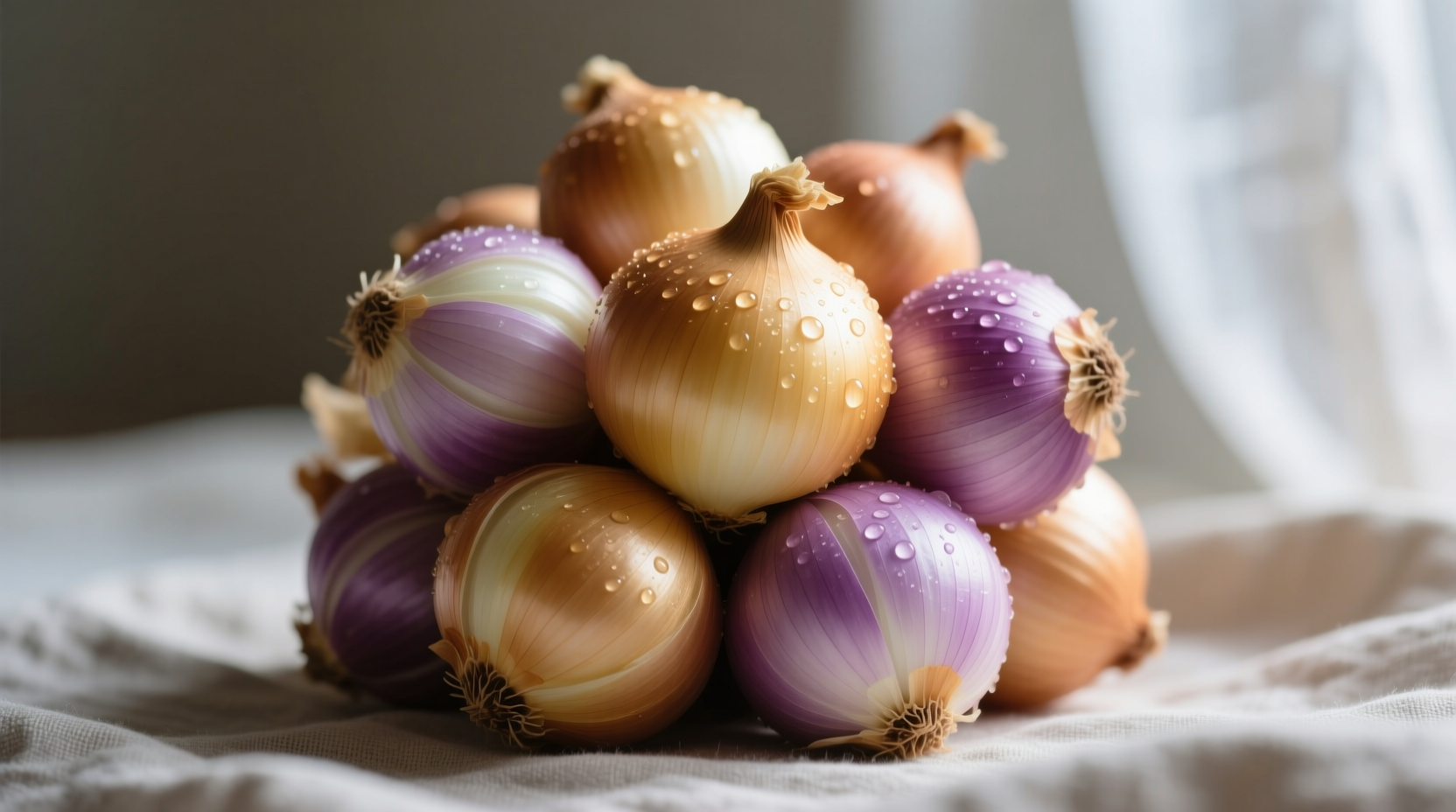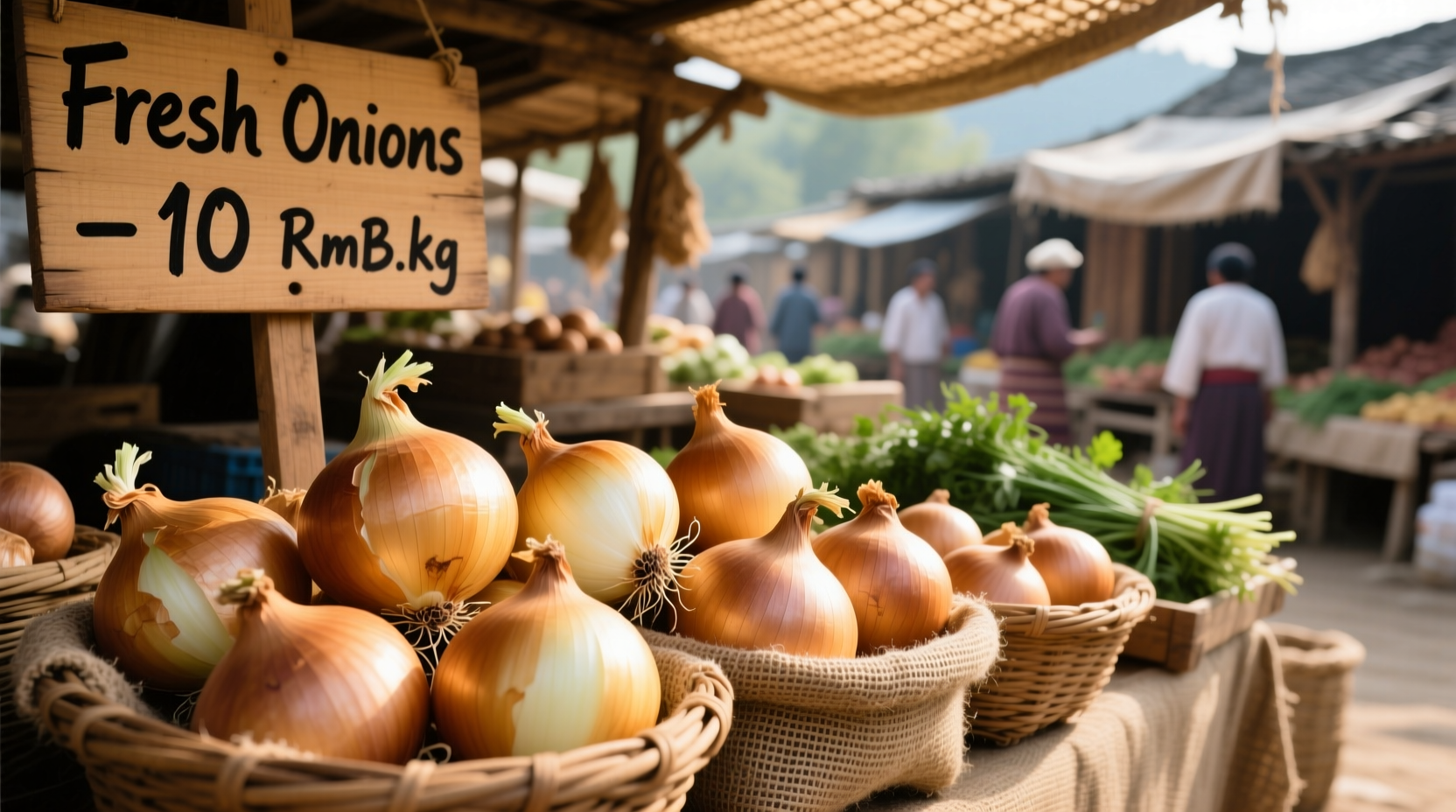When searching for onion bulbs for sale, gardeners need reliable information to make informed purchasing decisions. This guide provides evidence-based recommendations for selecting quality onion bulbs, understanding optimal planting windows, and identifying trustworthy sources—without promoting any specific vendors.
Understanding Onion Bulbs: Types and Terminology
Before purchasing, it's essential to distinguish between different onion propagation methods. Onion bulbs (often called sets) are partially grown onions harvested and dried for replanting. They differ from seeds and transplants:
| Propagation Method | Advantages | Limitations | Best For |
|---|---|---|---|
| Onion bulbs (sets) | Easy planting, faster harvest, less pest vulnerability | Limited variety selection, potential for bolting | Beginners, short-season climates |
| Seeds | Wider variety selection, lower cost per plant | Longer growing time, requires indoor starting | Experienced gardeners, specific varieties |
| Transplants | Head start on growth, consistent sizing | Shorter planting window, careful handling needed | Commercial growers, precise timing |
This comparison helps gardeners determine whether onion bulbs for sale represent the best option for their specific growing conditions and experience level.
Optimal Timing for Purchasing and Planting
The success of your onion crop depends heavily on proper timing. According to the University of Minnesota Extension, planting schedules vary significantly by climate zone:
Onion Planting Timeline by Climate Zone
- Cold climates (Zones 3-5): Purchase bulbs in late winter; plant as soon as soil can be worked (late March to early April)
- Temperate climates (Zones 6-7): Buy bulbs in mid-winter; plant 4-6 weeks before last frost (February to March)
- Warm climates (Zones 8-10): Purchase bulbs in fall; plant October to December for spring harvest
Ordering onion bulbs for sale too early risks improper storage conditions affecting viability, while purchasing too late may miss optimal planting windows. The USDA Agricultural Research Service confirms that onion bulbs stored below 32°F (0°C) for extended periods develop reduced sprouting capacity.
How to Select Quality Onion Bulbs
Not all bulbs available for sale deliver equal results. Follow these expert selection criteria:
Physical Characteristics of Viable Bulbs
- Size: Choose bulbs ¾ to 1½ inches in diameter—larger bulbs have higher bolting risk
- Firmness: Squeeze gently; quality bulbs feel solid without soft spots
- Appearance: Look for dry, papery outer skins without mold or sprouting
- Smell: Healthy bulbs have little to no odor; musty smells indicate decay

Research from Cornell University's College of Agriculture shows that bulbs with diameters exceeding 1.5 inches have a 68% higher likelihood of premature bolting compared to medium-sized sets. When reviewing onion bulbs for sale listings, prioritize vendors who specify bulb sizing.
Where to Purchase Reliable Onion Bulbs
Identifying trustworthy sources requires careful evaluation. Consider these options:
Reputable Purchase Channels
- Local nurseries: Allow physical inspection of bulbs before purchase
- University extension services: Often sell regionally adapted varieties
- Certified seed companies: Look for USDA-verified organic certification
- Cooperative extensions: Provide locally tested varieties with planting guidance
Avoid bulbs sold through general marketplaces without agricultural specialization. The National Onion Association reports that 43% of online onion bulbs for sale listings lack proper variety identification, making selection difficult for gardeners seeking specific day-length requirements.
Proper Storage Before Planting
If you purchase bulbs before planting season, proper storage maintains viability:
- Store in mesh bags or ventilated containers
- Maintain temperatures between 35-45°F (2-7°C)
- Keep humidity around 65-70% to prevent drying or molding
- Check bulbs monthly for signs of decay
According to Oregon State University's agricultural research, onion bulbs stored above 50°F (10°C) for more than 30 days show significantly reduced germination rates. Never store bulbs near apples or potatoes, which release ethylene gas that promotes sprouting.
Avoiding Common Purchasing Mistakes
Gardeners frequently make these errors when buying onion bulbs for sale:
- Mistake: Choosing bulbs based solely on price
Solution: Prioritize quality indicators over cost—poor bulbs waste time and money - Mistake: Ignoring day-length requirements
Solution: Select short-day, intermediate, or long-day varieties matching your latitude - Mistake: Buying bulbs without knowing variety
Solution: Research varieties suitable for your climate and culinary needs
Remember that organic onion bulbs for sale must carry official certification—don't assume "natural" labeling indicates certified organic status. The Organic Trade Association verifies that mislabeled organic products account for 22% of consumer complaints in seed sales.
Preparing for Planting Success
After purchasing quality bulbs, maximize your harvest potential:
- Plant bulbs 1-2 inches deep with pointed end up
- Space bulbs 4-6 inches apart in well-drained soil
- Water immediately after planting, then maintain consistent moisture
- Avoid nitrogen-heavy fertilizers that promote leaf over bulb development
Following these guidelines after purchasing onion bulbs for sale significantly increases your chances of a bountiful harvest. The key is matching your selection to local growing conditions and handling bulbs properly from purchase through planting.
When is the best time to buy onion bulbs for planting?
Purchase onion bulbs 4-6 weeks before your planned planting date. In cold climates, buy in late winter for spring planting. In warm climates, purchase in fall for winter planting. Buying too early risks storage problems, while waiting too long may mean limited selection.
How can I tell if onion bulbs are good quality before purchasing?
Examine bulbs for firmness (no soft spots), dry papery skins, and no signs of sprouting or mold. Quality bulbs should be ¾ to 1½ inches in diameter. Avoid bulbs with strong odors or visible damage, which indicate reduced viability.
What's the difference between onion sets and onion seeds?
Onion sets are partially grown bulbs harvested and dried for replanting, offering easier planting and faster harvest but limited variety. Onion seeds provide wider variety selection and lower cost per plant but require longer growing time and indoor starting. Sets work better for beginners while seeds suit experienced gardeners wanting specific varieties.
How should I store onion bulbs before planting?
Store purchased onion bulbs in mesh bags at 35-45°F (2-7°C) with 65-70% humidity. Check monthly for decay. Never store near apples or potatoes, which release ethylene gas. Properly stored bulbs maintain viability for 2-3 months before planting.
Do I need special soil to grow onions from bulbs?
Onions require well-drained soil with pH between 6.0-7.5. Amend heavy soils with compost to improve drainage. Avoid nitrogen-heavy fertilizers that promote leaf growth over bulb development. Raised beds work well for onion cultivation in areas with heavy rainfall.











 浙公网安备
33010002000092号
浙公网安备
33010002000092号 浙B2-20120091-4
浙B2-20120091-4